How To Zest A Lemon 5 Ways (+ Tips!)
This post may contain affiliate links. See our disclosure policy for more.
Need a little lemon zest for a recipe? We’ll teach you everything you need to know about how to zest a lemon!
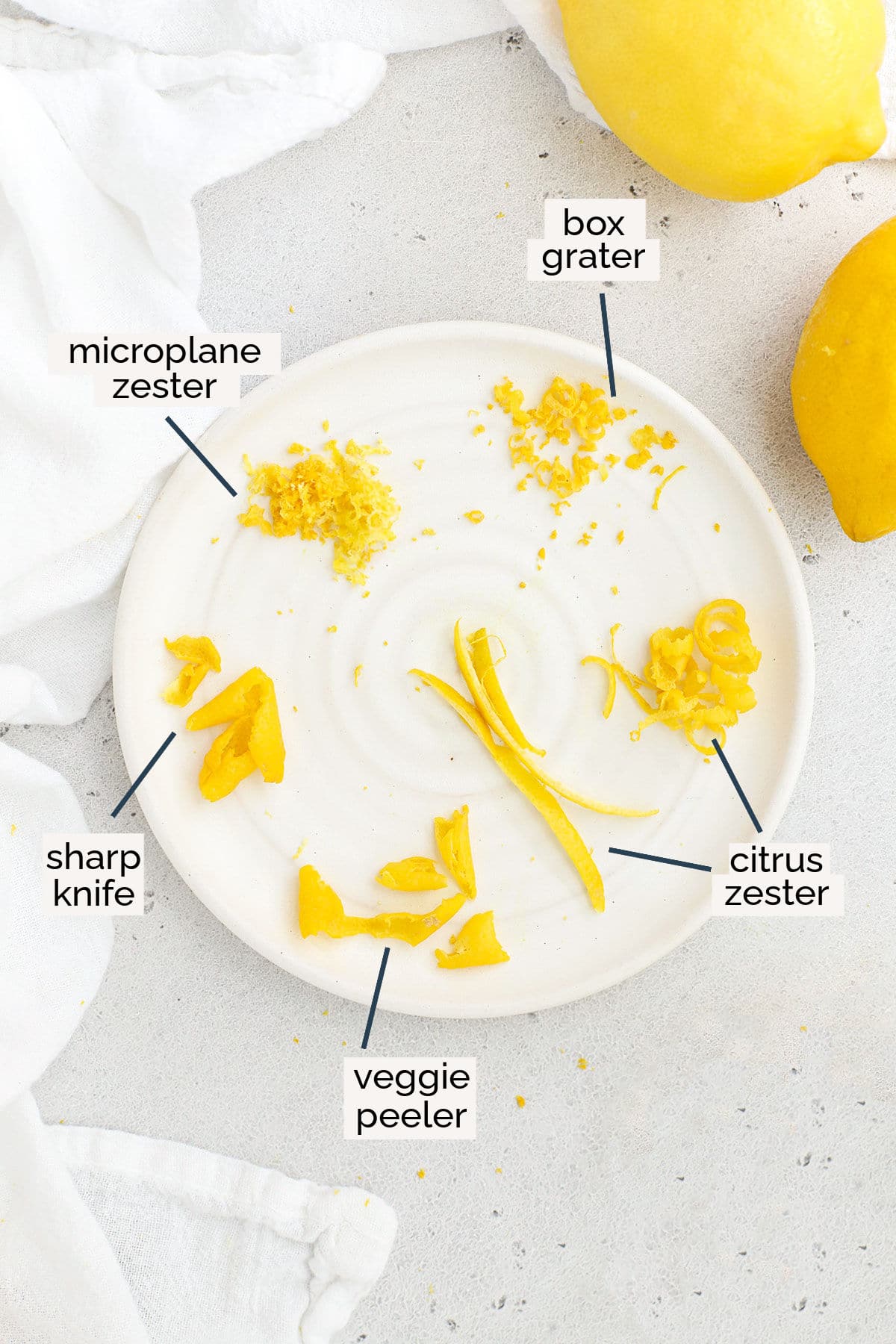
Lemon is one of my favorite flavors to use in cooking and baking. It feels like lemon goes with almost everything! From sweets like cookies, cakes, pies, and bars, to savory options like chicken, salads, dressings, sauces, and vegetables, lemon zest adds delicious flavor!
Many of my favorite lemon recipes pack the biggest lemon punch by using both lemon zest and lemon juice. I’m all about that lemon zest!
If you’ve ever wondered “what does it mean to zest a lemon?,” “how much zest is in a lemon?” or “what exactly is lemon zest?” you’re not alone! Thankfully, zesting a lemon is a SUPER easy culinary trick that will instantly add vibrant fresh lemon flavor to recipes and baked goods of all kinds.
Here’s what you need to know about how to zest a lemon (and other citrus fruits, too!)…
Zesting A LEmon, At A Glance:
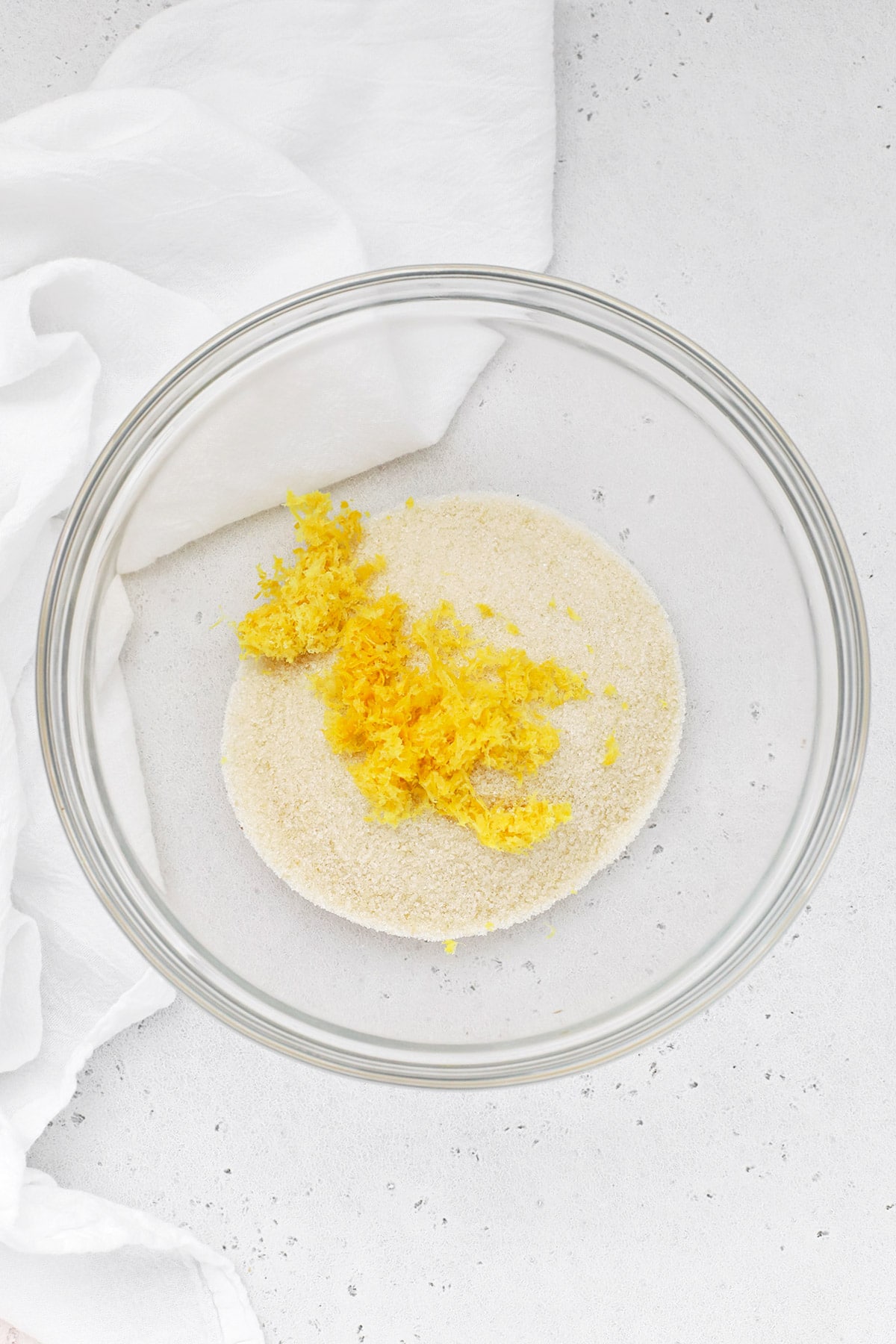
What Is Lemon Zest?
So what exactly IS lemon zest? Is it the same thing as lemon peel? Let’s talk about it!
- Lemon zest is the yellow lemon peel–the thin, porous outer layer or rind of a lemon. It’s important to note that lemon zest is the yellow part of the peel ONLY. It’s is full of lemon essential oils that are so fragrant and flavorful.
- Lemon zest does NOT include the white part beneath. This white layer is called the pith. It’s bitter, spongy, and can add an unpleasant taste and texture to recipes.
How Much Lemon Zest Do You Get Per Lemon?
The general rule of thumb is that 1 lemon yields about 1 Tablespoon of zest. If your lemons are smaller or larger, you may get less or more zest.
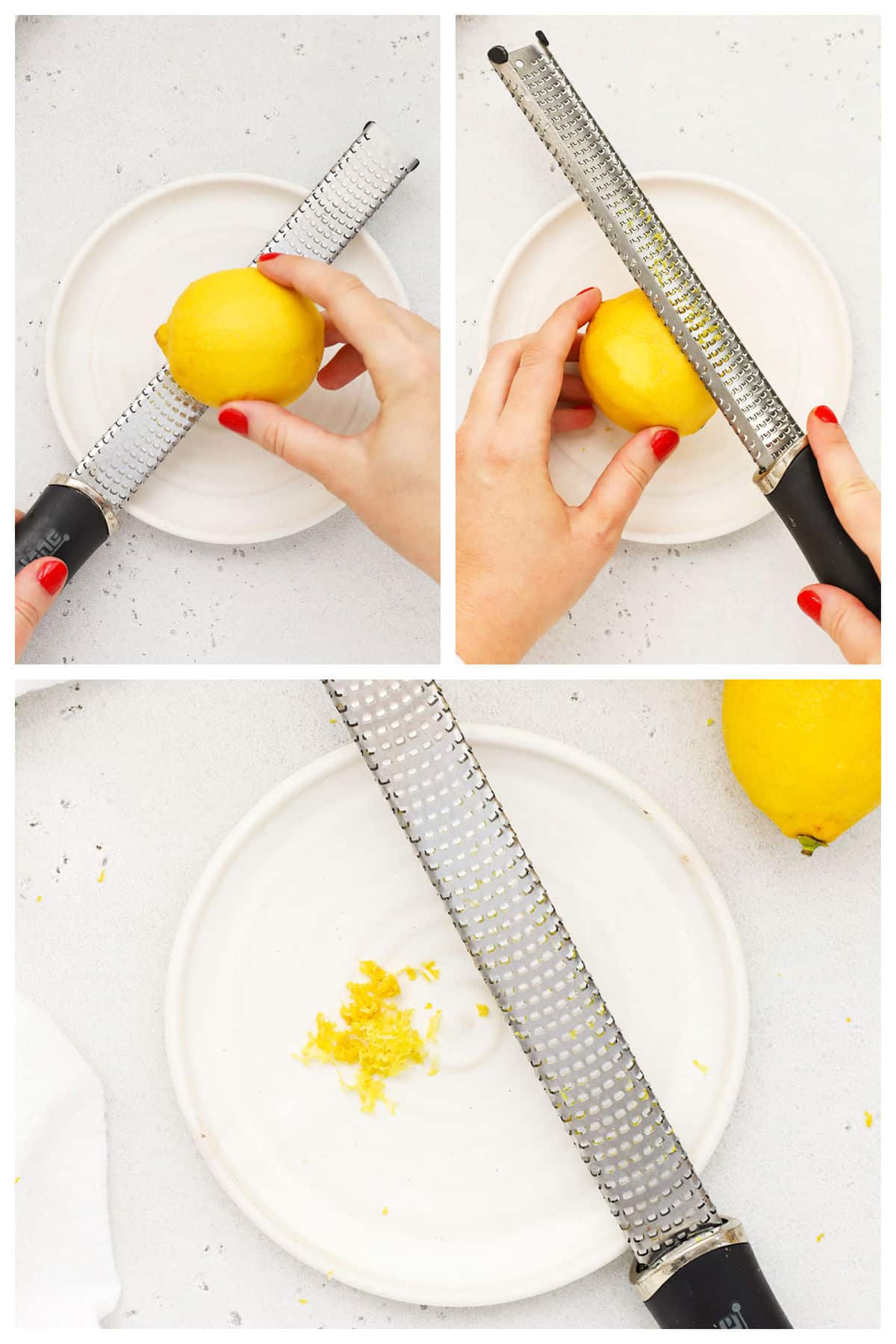
How To Zest A Lemon – 5 Ways
Now that you know what lemon zest IS, how do you get the zest off of a lemon? There are several ways you can try, ranging from easiest and most effective, to most difficult and least effective. (You can use zest citrus fruits, like oranges, limes, and grapefruit using the same methods!)
1. Use A Microplane Zester (Easiest)
The easiest, most effective way to zest a lemon is to use a microplane zester or rasp grater. Microplane is a brand name, but (much like Kleenex and tissues) it has kind of been adopted as the description for a rasp grater.
This type of grater has an exceptionally fine toothed texture which makes for fine, delicate grating. It’s perfect for getting the thin layer of zest off of citrus fruit, finely grating parmesan cheese, etc. You use it much like a traditional grater.
For the best stability and visualization, I recommend placing the lemon on a stable surface (countertop, cutting board, etc.) and using the zester upside down, so that you can easily see when you reach the white pith. If you prefer, you can instead brace the zester against the stable surface and hold the lemon in your dominant hand. Move the over the zester, trying to JUST get the yellow zest and not the white pith.
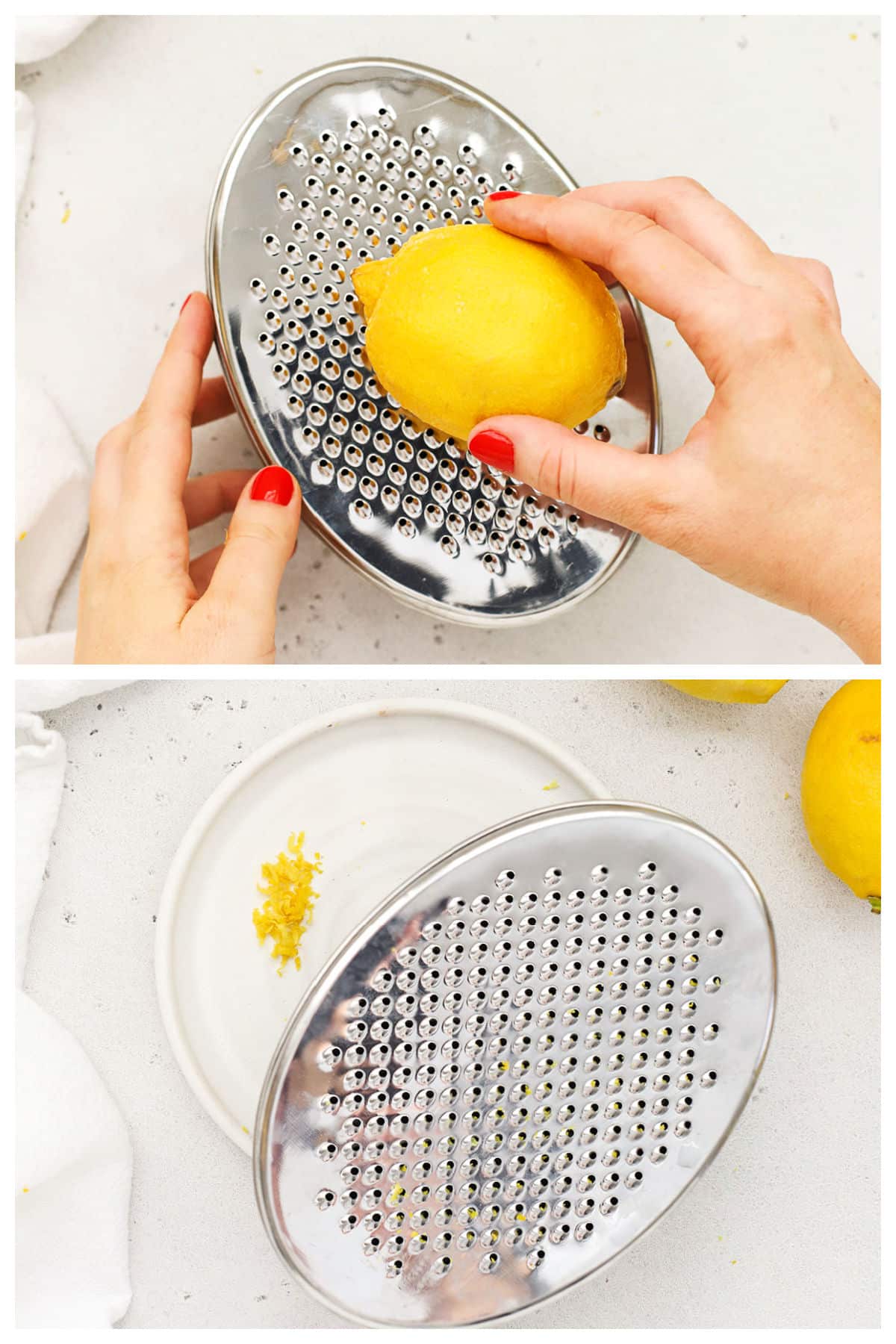
2. Use A BoX Grater
If you don’t have a microplane zester/rasp grater, you can use the finest side of a box grater or hand-held grater (cheese grater) for a similar effect. Again, focus on getting just the yellow zest, and avoiding the white pith.
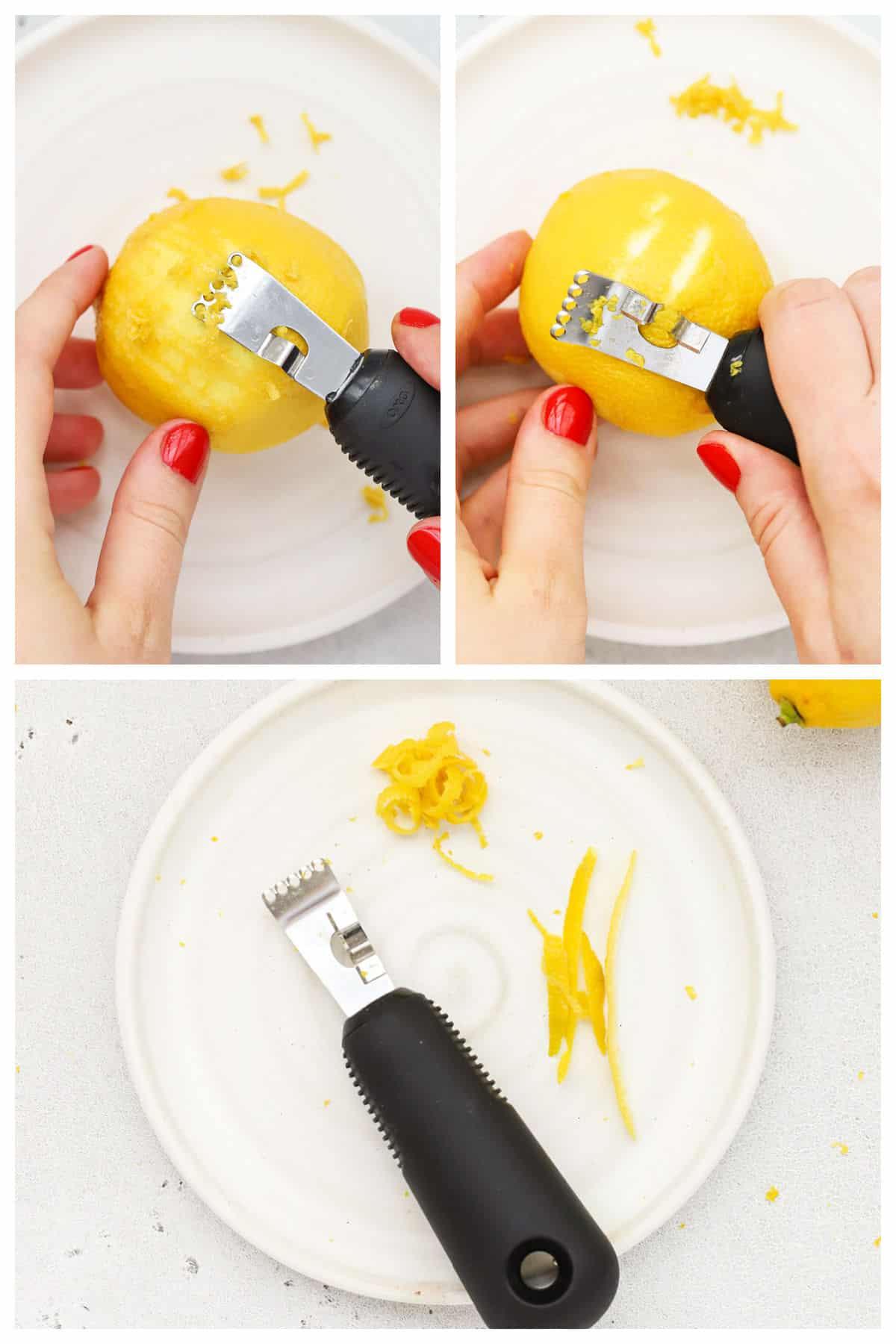
3. Use A Citrus Zester With Channel Knife
This type of citrus zester is best if you’re looking for larger curls or slices of zest. Larger strips of lemon zest work beautifully for garnish, cocktails, or mocktails, since they have a bigger visual impact.
There are two parts to this type of zester. The small, circles at the top are the zester, while the indented grater on the side is called the channel knife. The zester will form long strings of zest, while a channel knife will make one large curly peel.
It can take a bit of practice to get this tool down, so I only use it when I need to for garnish. To use the zester end, hold the tool in your dominant hand and gently press the zester down into the lemon zest and scrape towards your body, doing your best to remove just the yellow zest.
To use the channel knife, hold the zester tool in your dominant hand. Press in and scrape to make long strips of zest. (This video gives you a nice visual of ways to use a channel knife to make decorative accents!)
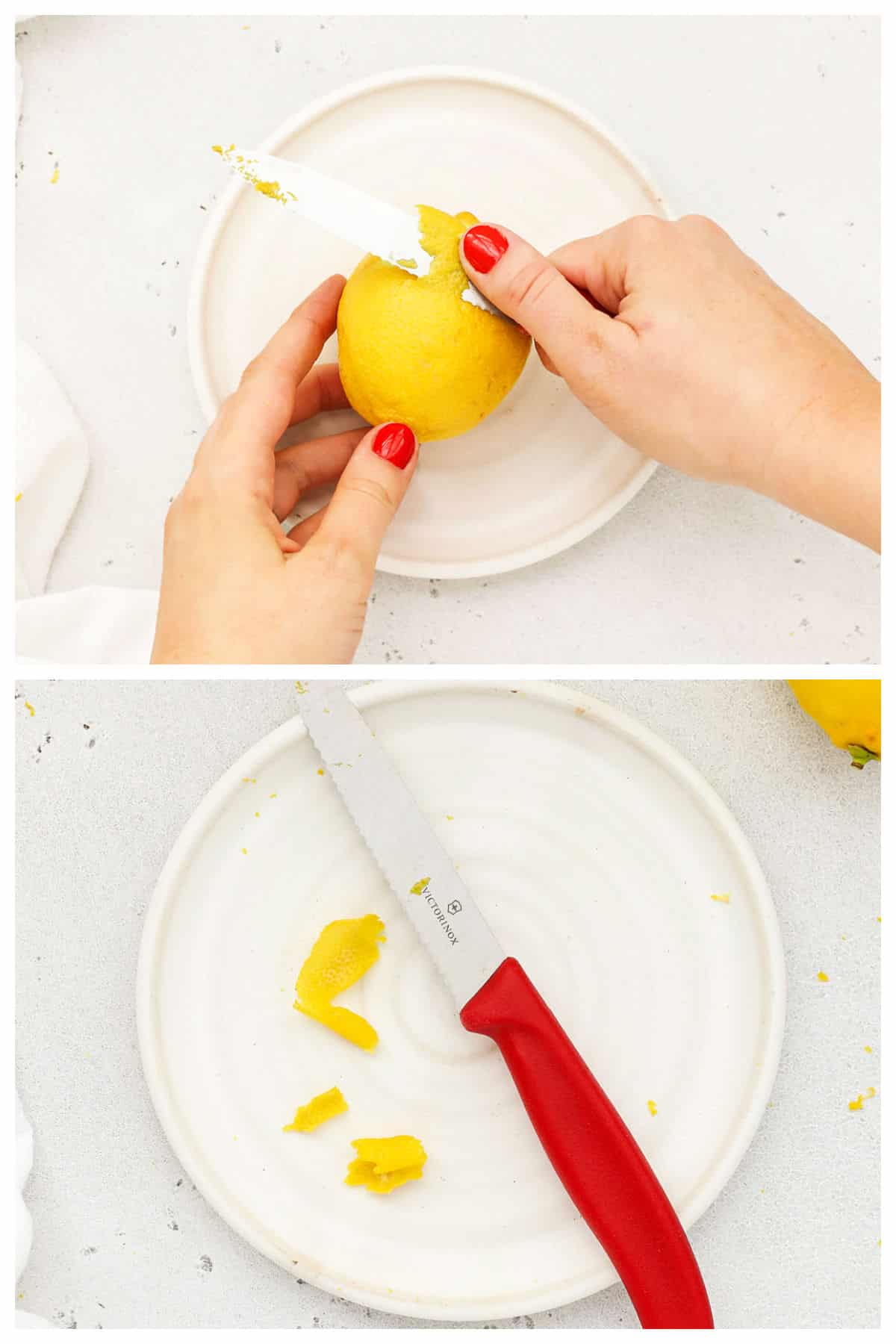
4. Use A Knife
Okay, but can you zest a lemon without a grater? If you don’t have any type of grater or zester available, it is possible to remove the zest from a lemon with a knife. This requires good knife skills and a sharp paring knife or small, sharp serrated knife. Carefully use the knife to cut away the zest in large sections, trying your best to avoid the white pith.
From there, you can use the large pieces, or you can mince or slice the strips of zest into smaller pieces, as needed.
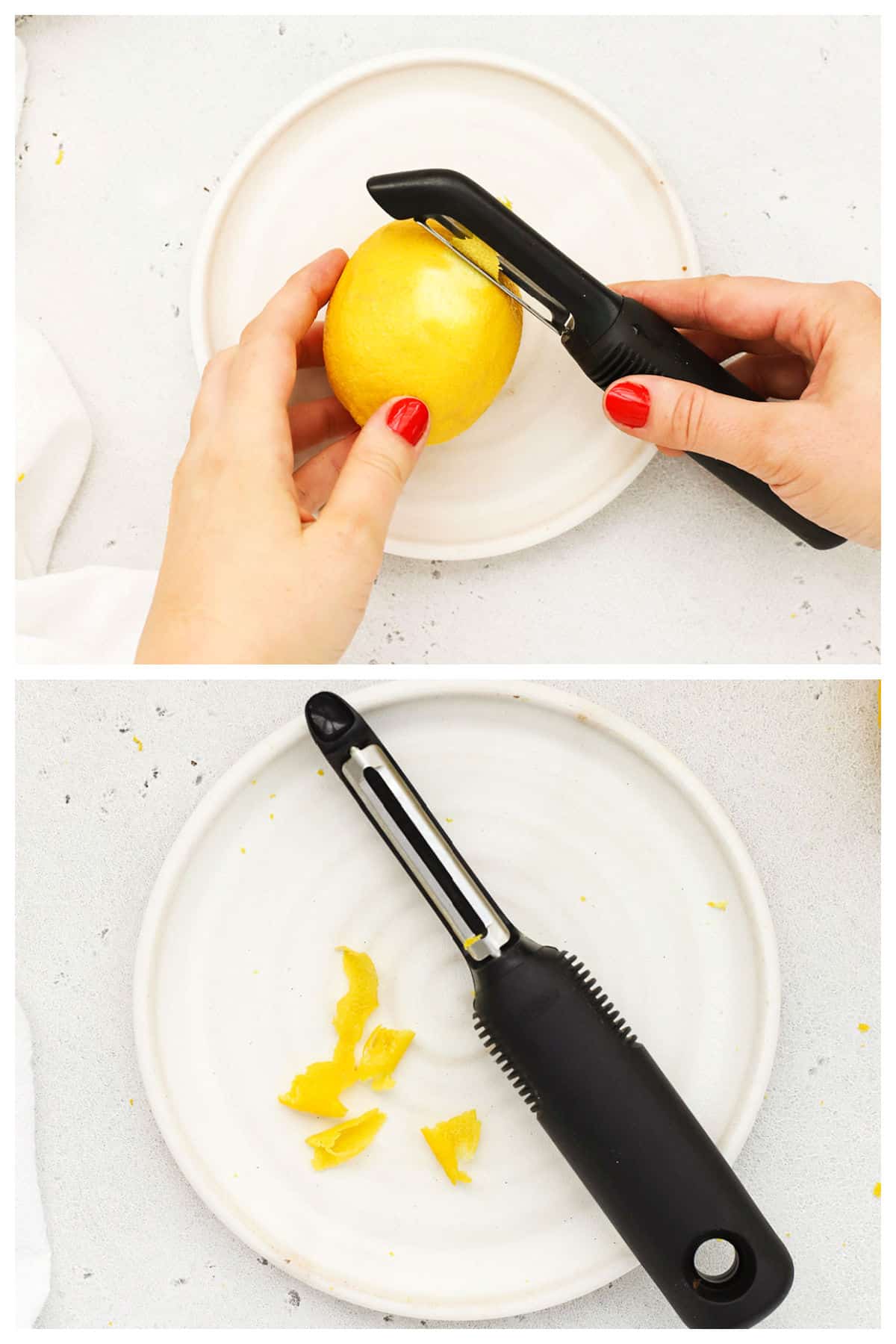
5. Use A Vegetable Peeler
In my experience, this is the least effective and most difficult way to zest a lemon. If you have a very sharp vegetable peeler and a firm lemon, you can use it like a paring knife, to carefully remove the zest in long strips.
I find many of us don’t have a strong enough veggie peeler or the peeler tends to also scrape off the white pith underneath. It’s very easy to cut yourself with this method, so I only recommend it if it’s your only option and you’re an experienced cook/baker.
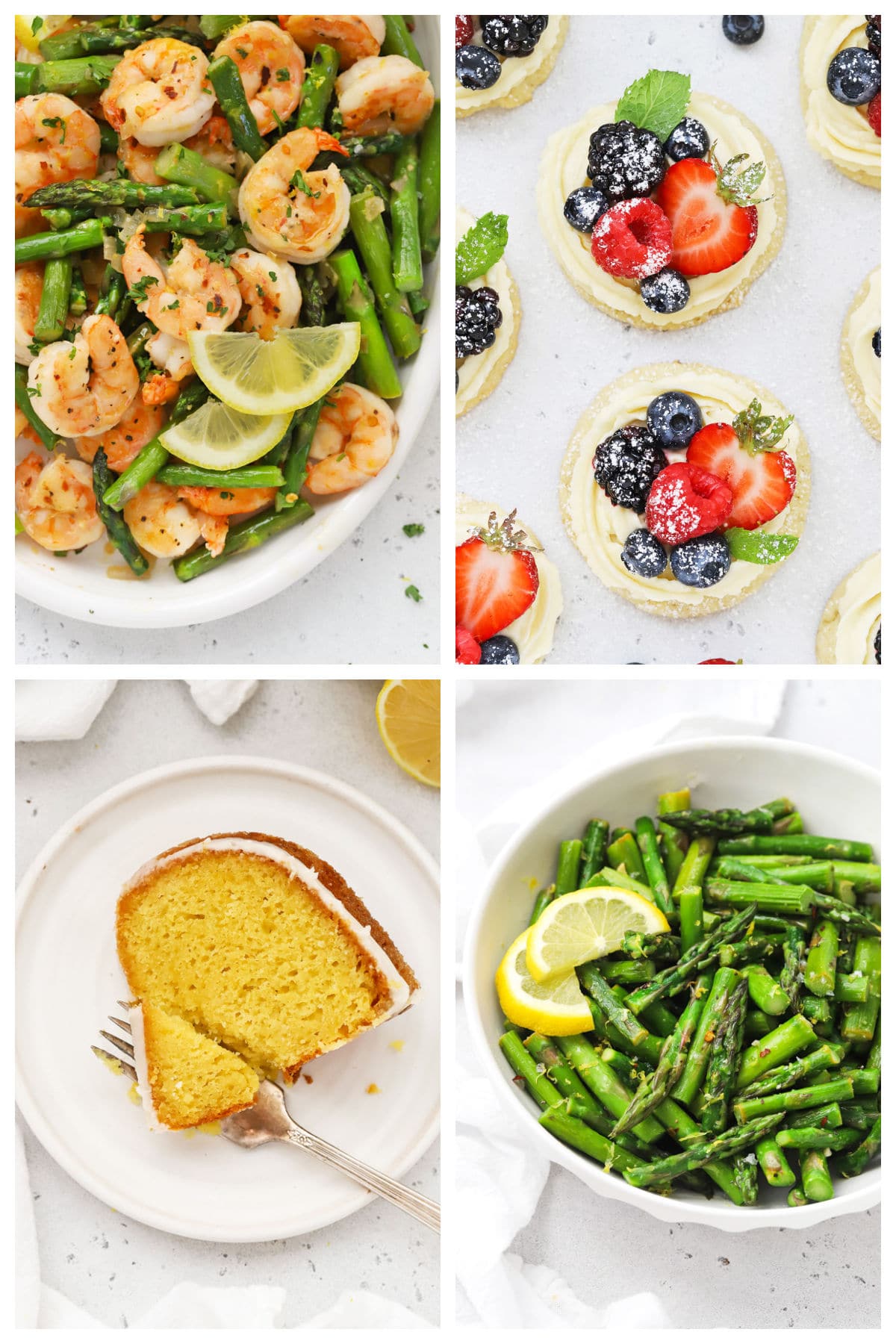
10 Ways To Use Lemon Zest In Cooking & Baking:
Now that you know how to zest a lemon, I thought I’d share some yummy ways to use it! Here are 10 of my favorite ways to use lemon zest in baking and cooking projects:
- Lemon Bundt Cake. Light, fluffy, and bursting with lemon flavor, this Gluten-Free Lemon Cake, well… takes the cake!
- Garnishing Green Veggies. Add a little lemon zest and lemon juice to steamed, roasted, grilled, or sauteed green veggies. Try Lemon Asparagus, Lemon Broccoli, some zucchini, artichokes, peas, or Spinach With Lemon and Garlic.
- Lemon Poppy Seed Muffins. Want to add some serious lemon flavor to your muffins? Try these Lemon Poppy Seed Muffins which use plenty of lemon zest for serious lemon flavor.
- Energy Bites. Adding a bit of zest to these Lemon Energy Bites makes them taste like dessert. Really. No sugar required!
- Lemon Shrimp. Seafood and lemon are a classic pairing, and this super quick One Pan Lemon Shrimp recipe makes for a fresh, easy dinner any night.
- Pesto. Next time you make pesto, add a bit of lemon zest and lemon juice. You’ll never be the same!
- Chicken Marinades. Pair lemon juice, lemon zest, olive oil, garlic, and some fresh herbs and you’ve got an instantly delicious chicken marinade.
- Lemon Brownies! You’ve had brownies, you’ve had lemon bars, but have you had LEMON BROWNIES? They’re like a fudgier version of lemon cake, and they’re not to be missed!
- A Pretty Mocktail! Add thick strands of lemon zest to a glass of our Strawberry Basil Lemonade or Raspberry Lemonade!
- Cheesecake. Adding the zest of a lemon to our Gluten-Free Cheesecake Recipe adds such a gorgeous layer of brightness to the velvety cheesecake filling.
- SO MUCH MORE. Use it in dressings, sauces, pasta, cupcakes, smoothies…even deviled eggs!
PRO TIP: Flavor Pairings. Lemon plays nicely with LOTS of flavors–honey, berries, garlic, basil, cilantro, thyme, rosemary, dill, black pepper, seafood, ricotta, balsamic vinegar, olive oil, chicken, almonds, cream cheese, yogurt, tahini, ginger, butter, mushrooms, feta, chili pepper, lavender, curry, turmeric, cherries, and more. Get creative in the kitchen by pairing lemon zest with some of these tasty flavors in your next recipe!
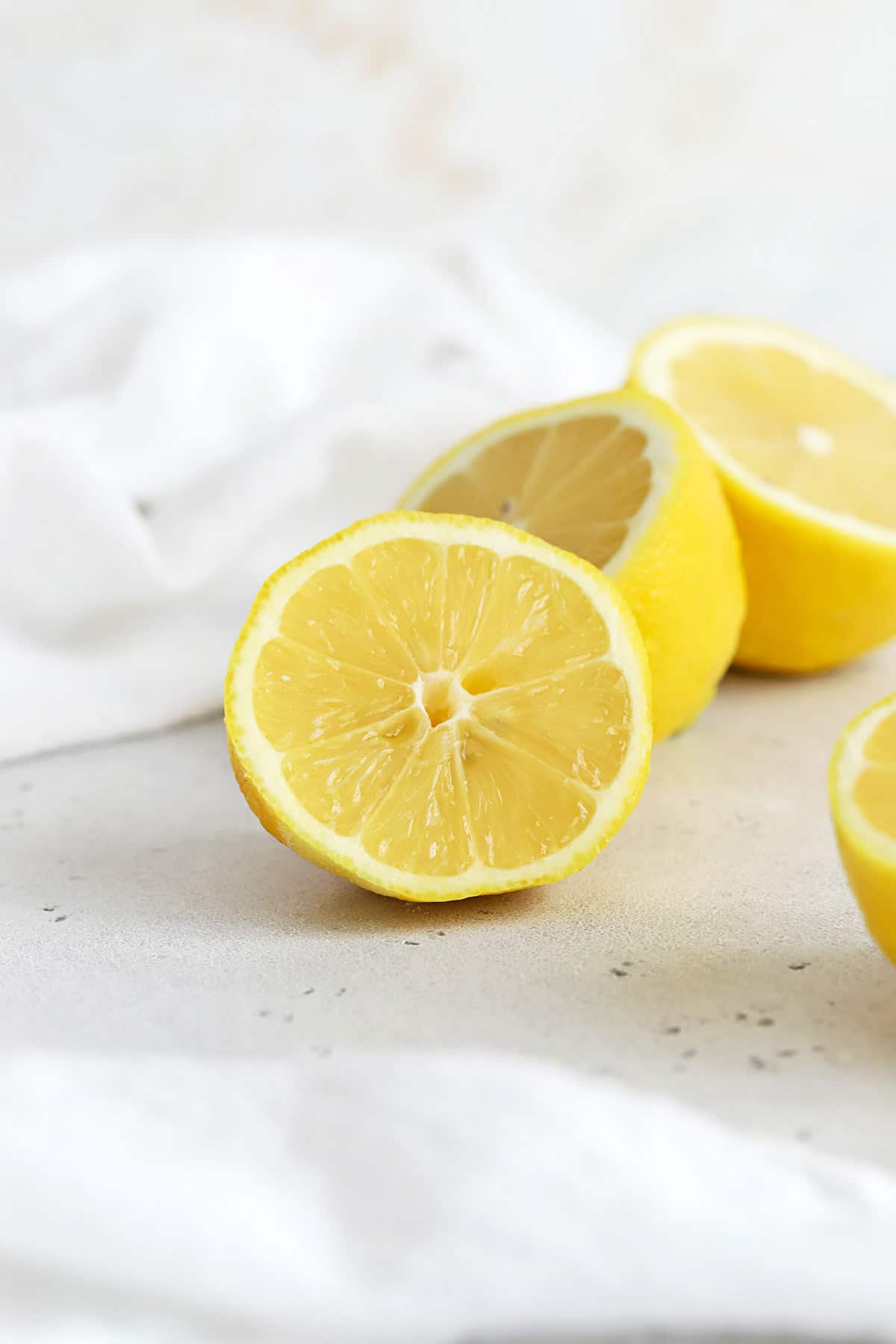
FAQ + Tips And Tricks For Zesting Lemons
Zest FIRST. If you’re juicing AND zesting a lemon, make sure to zest the lemon first. It’s easier and more effective when the lemon is whole.
How Long Does Lemon Zest Last In The Fridge? You can refrigerate lemon zest up to 2 days, but it will begin to dry out and lose flavor almost immediately. It’s best to use it as soon as possible or use frozen lemon zest.
Can you freeze lemon zest? YES! And this is one of my favorite kitchen tricks. Don’t let all that lovely lemon flavor go to waste! We use this method to freeze lemon zest. Store it in an airtight container in the freezer up to 1 month.
Can I substitute lemon juice for lemon zest? In most recipes, this will not be a good substitute. Lemon zest contains lemon oil (lemon essential oil), which is far more potent than lemon juice. Lemon juice also adds more liquid to a recipe than zest, so it can throw off the ratio of wet:dry ingredients.
Can you buy lemon zest in the store? I’ve never seen lemon zest available for sale at the grocery store–in a jar, frozen, etc. It tends to be too delicate to store fresh. The only exceptions are buying candied lemon peel (often used as a garnish or as an addition to cheeseboards), or dried lemon peel. Dried lemon peel doesn’t have the same potency or vibrance as fresh, so I only recommend it if called for specifically in a recipe.

More Gluten-Free Lemon recipes To Try:
- Gluten-Free Lemon Bundt Cake
- Fruit Pizza Cookies (With Gluten-Free Lemon Sugar Cookie Base!)
- Gluten-Free Lemon Brownies
- Gluten-Free Lemon Poppy Seed Muffins
WE ♥
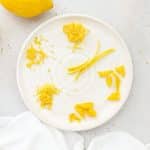
How To Zest A Lemon 5 Ways
- Total Time: 5 minutes
- Yield: 1 batch
- Diet: Gluten Free
Description
Learn how to zest a lemon 5 ways to add a lovely lemon twist to your next recipe!
Ingredients
- Fresh lemons
- A microplane zester, box grater, handheld zester with channel knife, sharp knife, or vegetable peeler
Instructions
With A Microplane Zester/Rasp Grater:
- Hold the microplane zester in one hand and your lemon in the other. For added stability, I recommend bracing either the zester or the lemon on a stable surface like a countertop or cutting board.
- Scrape the lemon across the surface of the microplane zester (or the zester across the surface of the lemon), rotating the lemon as you go. (Move to the next section as soon as you see white. You want ONLY the yellow lemon zest, NOT the white pith). If any zest sticks to the back side of the zester, gently tap it off or use a knife to scrape it away. Watch out for sharp edges!
With A Box Grater:
- Hold the box grater in your non-dominant hand and your lemon in your dominant hand.
- Scrape the lemon across the smallest side of the box grater, rotating the lemon as you go. (Move to the next section as soon as you see white. You want ONLY the yellow lemon zest, NOT the white pith).
With A Handheld Zester Tool (Or A Channel Knife):
- The small, circles at the top of this tool are the zester, while the indented grater on the side is called the channel knife. The zester will form long strings of zest, while a channel knife will make large sections of peel.
- To use the zester end, hold the tool in your dominant hand and gently press the zester down into the lemon zest and scrape towards your body, doing your best to remove just the yellow zest.
- To use the channel knife, hold the zester tool in your dominant hand. Press in and scrape to make long strips of zest.
With A Knife:
- Carefully use a small, sharp knife (like a paring knife or serrated paring knife) to cut away the zest in large sections, trying your best to avoid the white pith.
- From there, you can use the large pieces, or you can mince or slice the strips of zest into smaller pieces, as needed/desired.
With A Vegetable Peeler:
- If you have a very sharp vegetable peeler and a firm lemon, you can use it like a paring knife, to carefully remove the zest in long strips. Again, aim to only remove the yellow peel, not the white pith.
Notes
Tips:
- Lemon zest is the yellow peel ONLY. Avoid the spongy white pith underneath the zest, which is bitter.
- 1 medium lemon = 1 Tablespoon of lemon zest
- lemon zest is best used immediately, but can be frozen up to 1 month.
- To remove wax from lemons, place them in a colander and pour very hot (boiling) water over them to dissolve the wax, then scrub with a microfiber cloth or vegetable brush and rinse again.
- Zest FIRST. If you’re juicing AND zesting a lemon, make sure to zest the lemon first. It’s easier and more effective when the lemon is whole.
- Prep Time: 5 minutes
- Category: Tutorial
- Method: No-Cook
- Cuisine: American

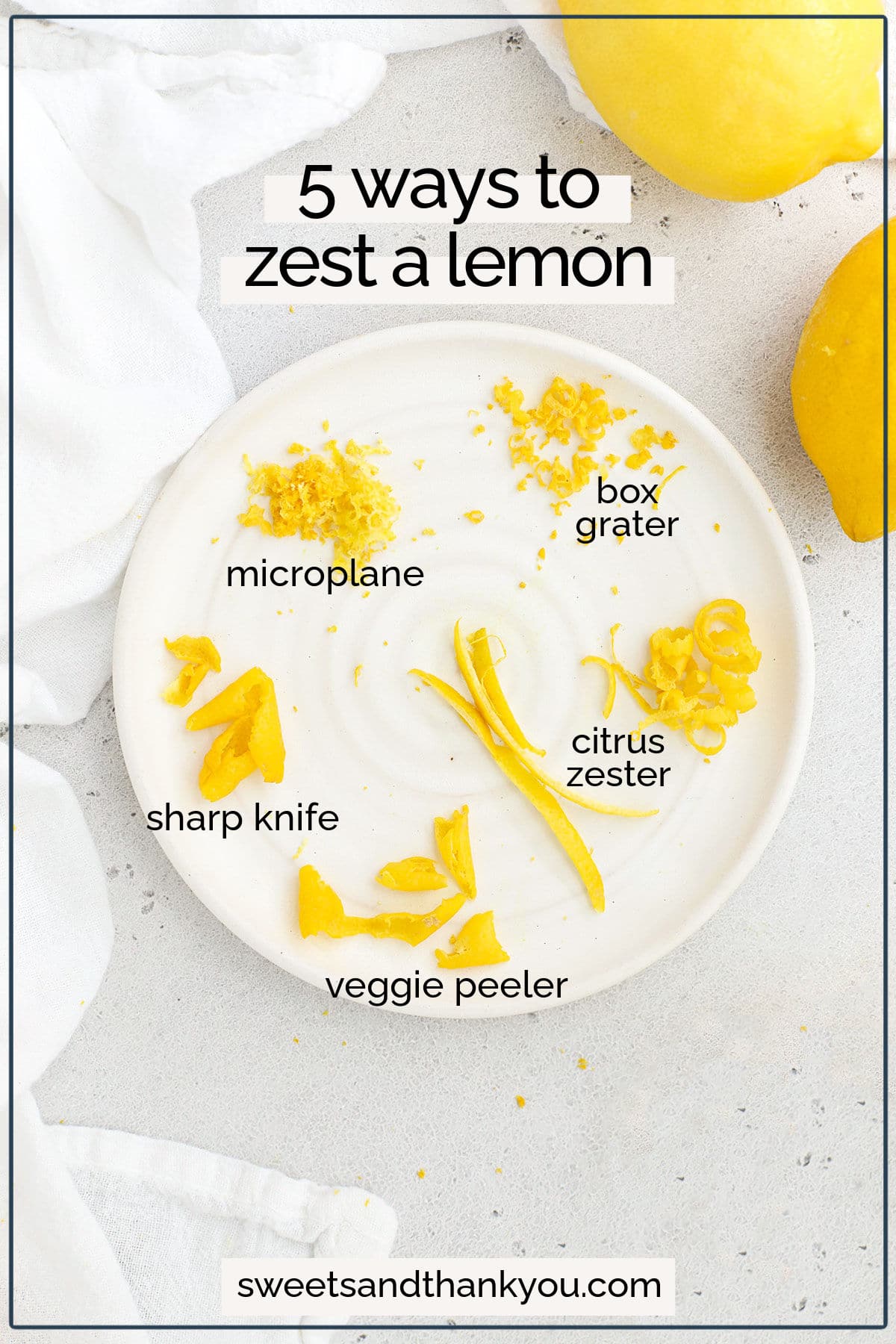
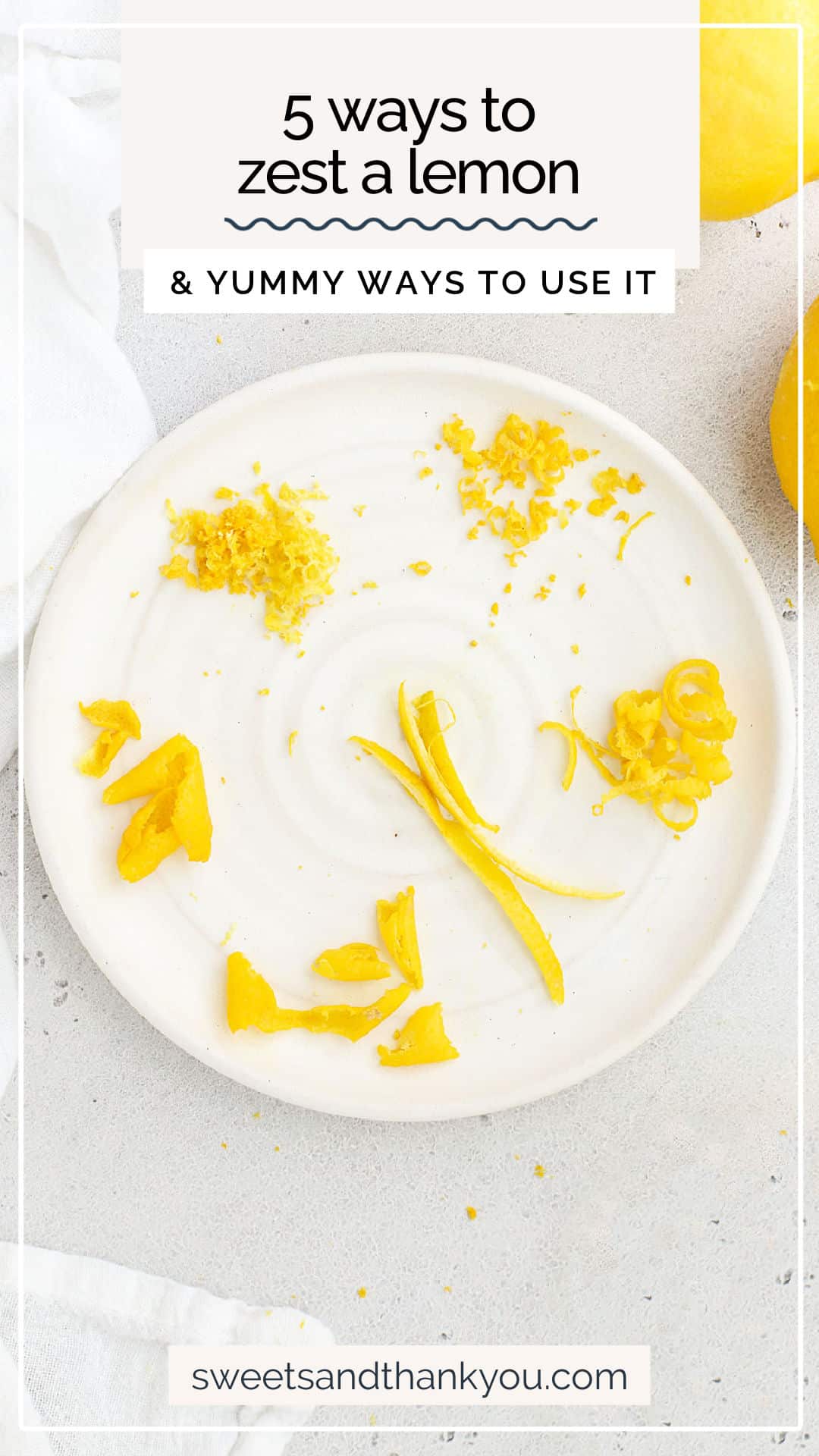
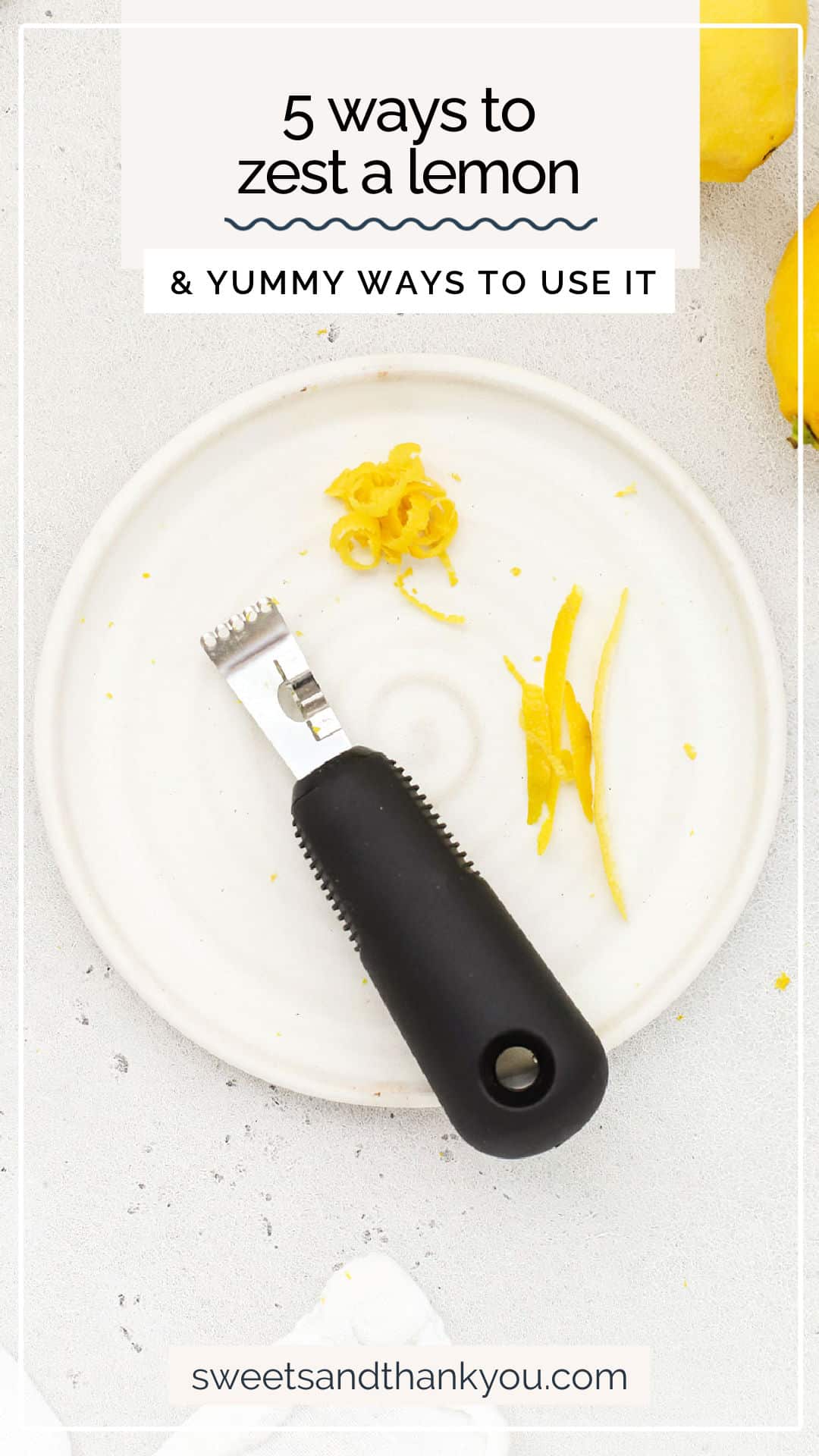
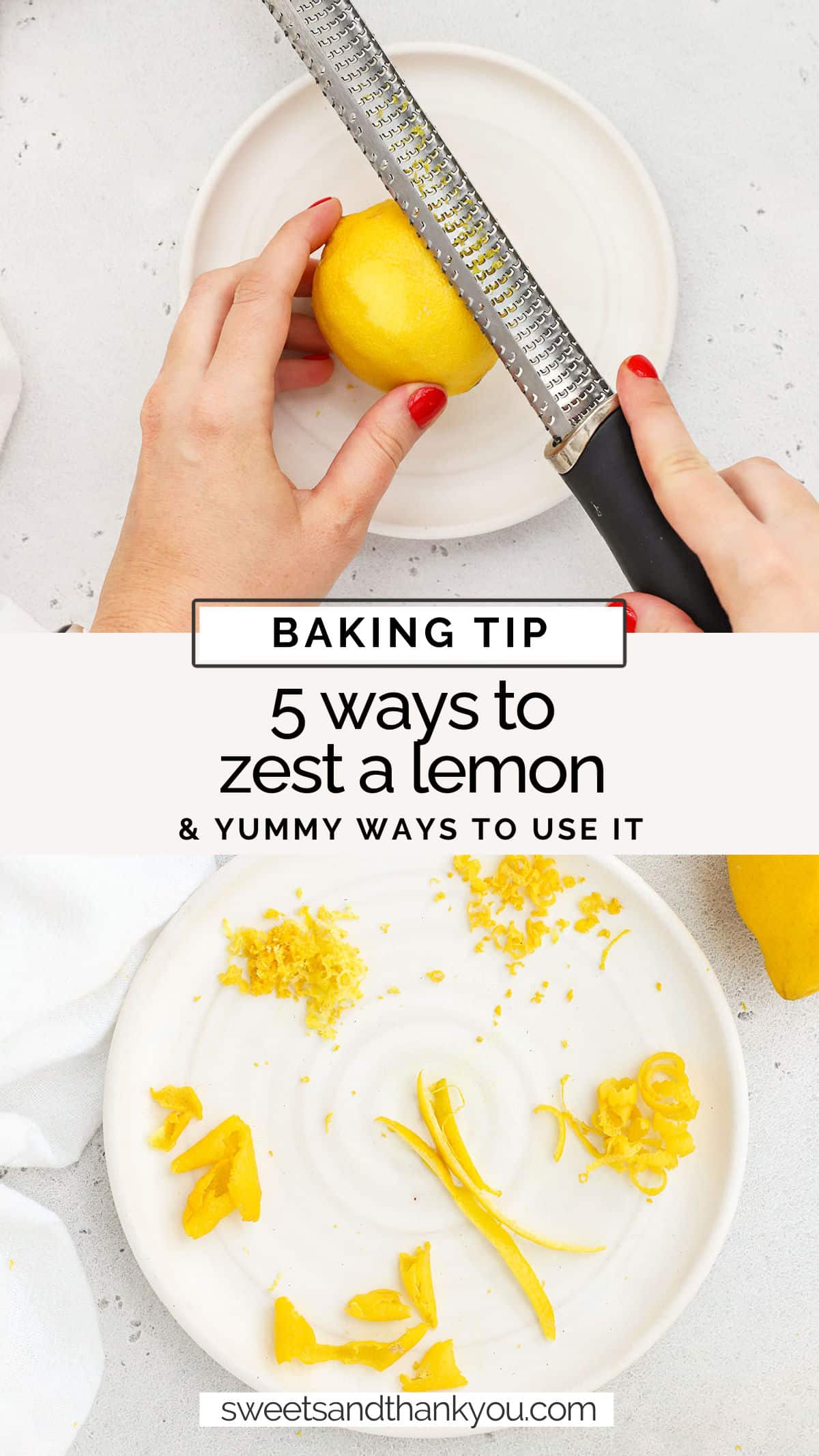
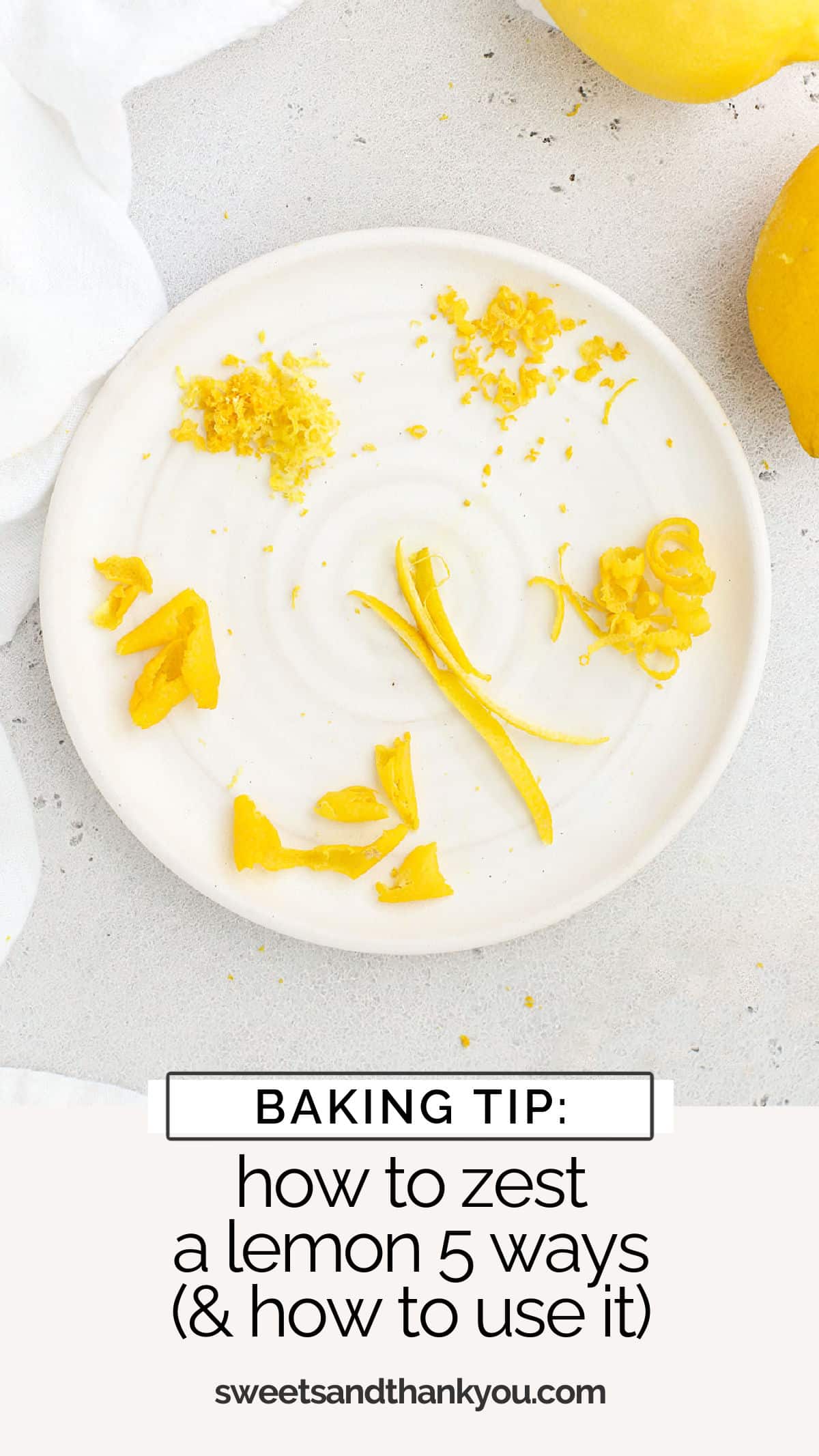
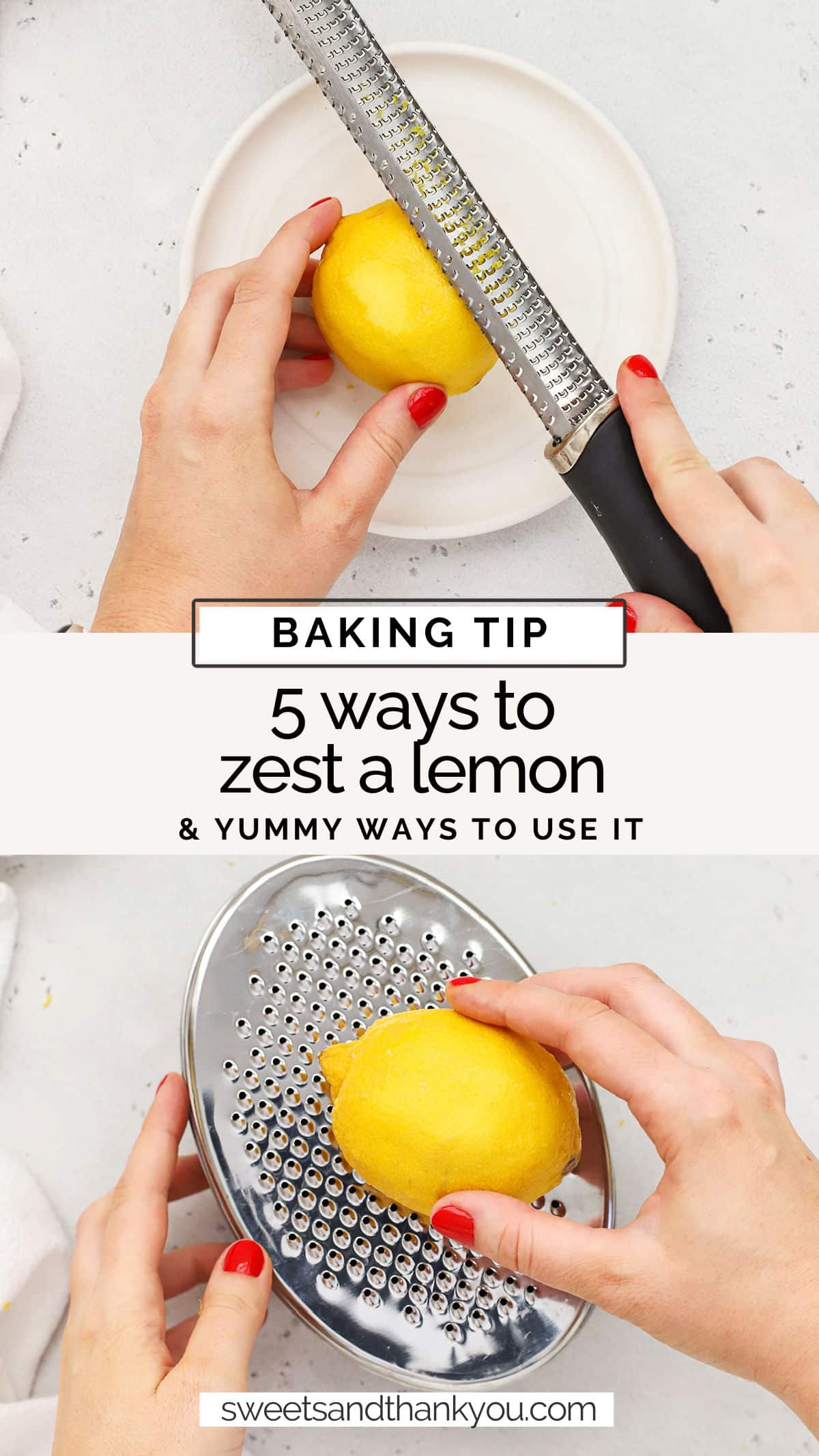
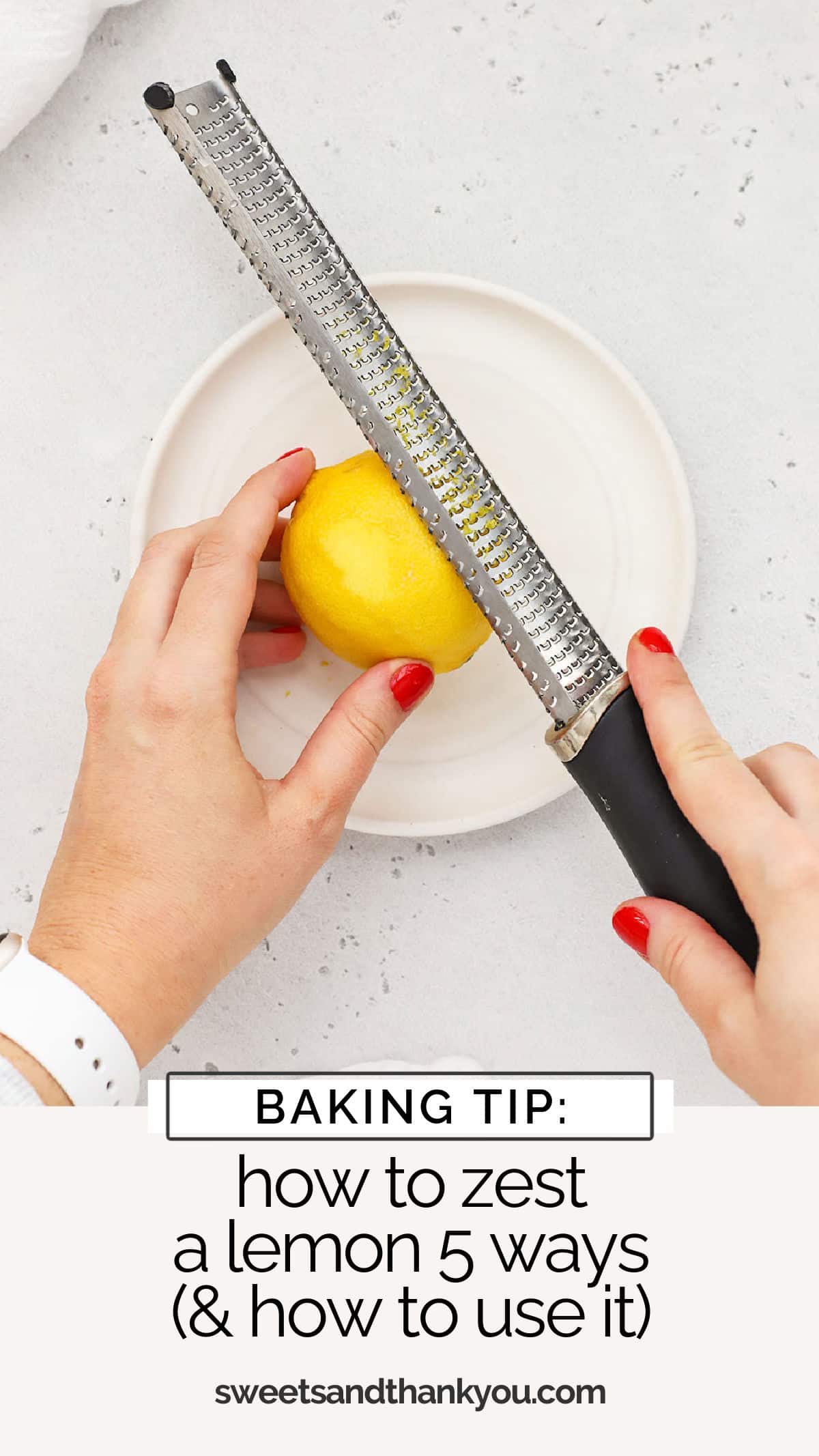
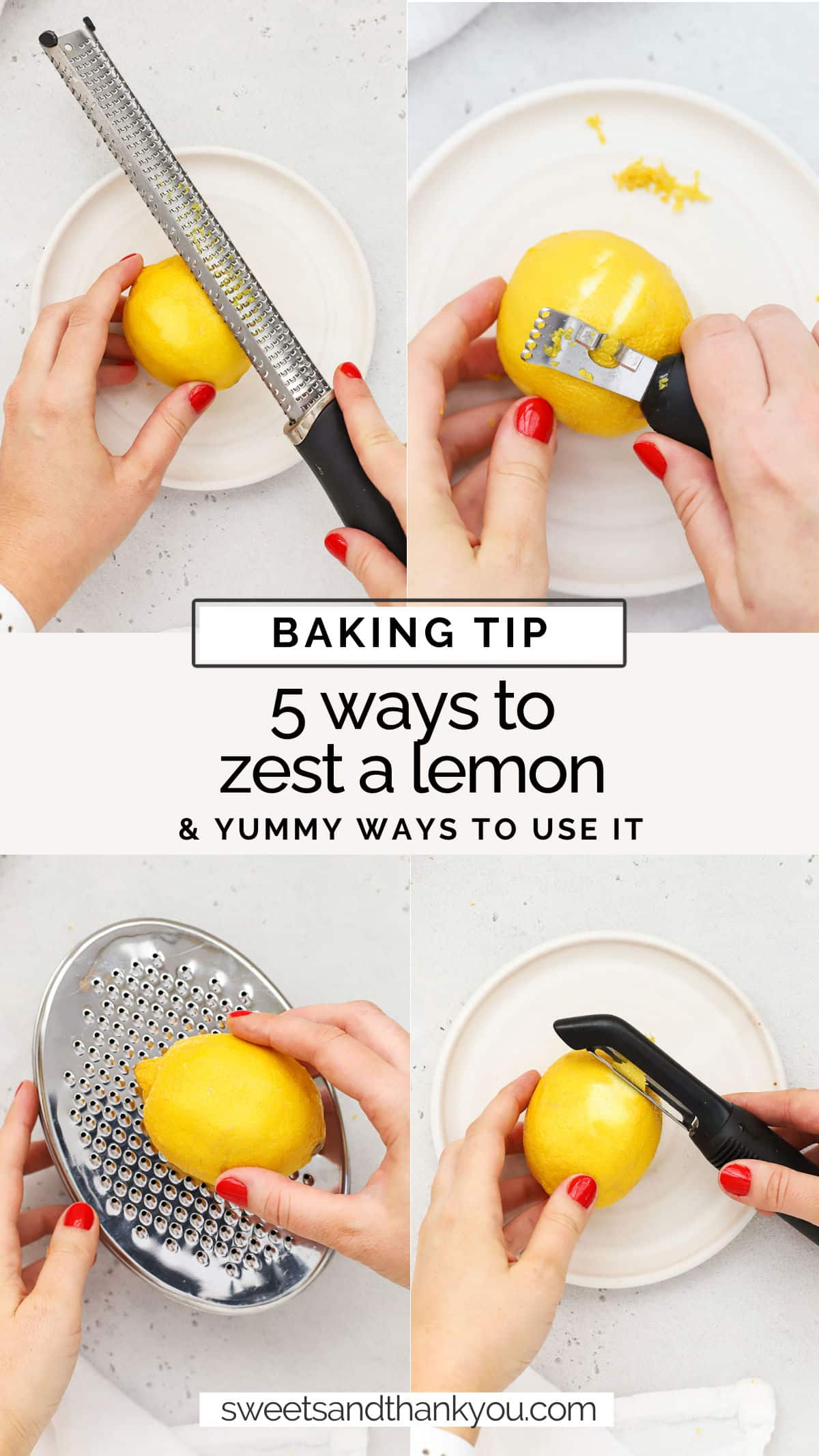


Hi. A question about using lemon or lime zest – how do I keep it from clumping together in the batter or cheesecake or whatever? Do I need to coat it in a little flour or sugar before I add it?
Hi, Sharon! Great question! My favorite trick for using citrus zest is to rub it into the sugar of the recipe at the start. It will help separate the zest, and it’ll also infuse more of the citrus oils into the grains of the sugar, which will give you a brighter, more vibrant flavor overall. Happy baking!